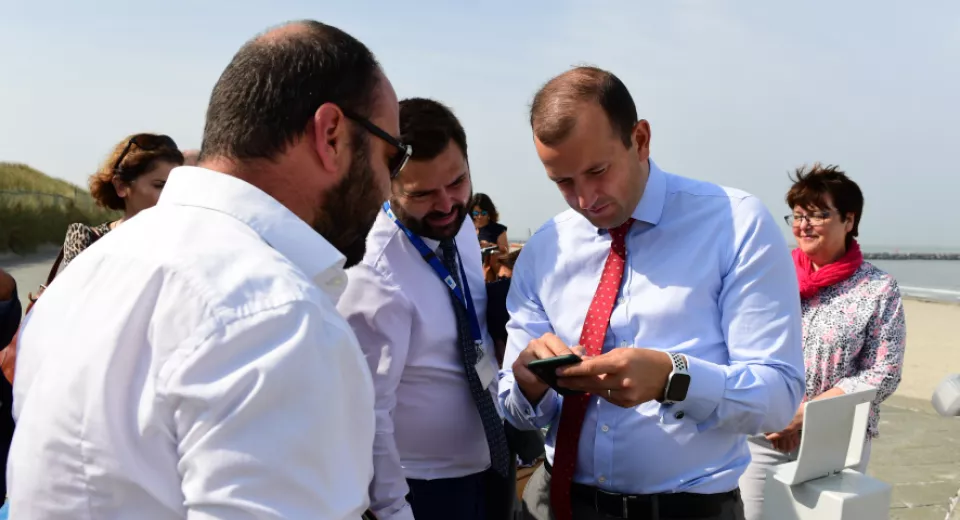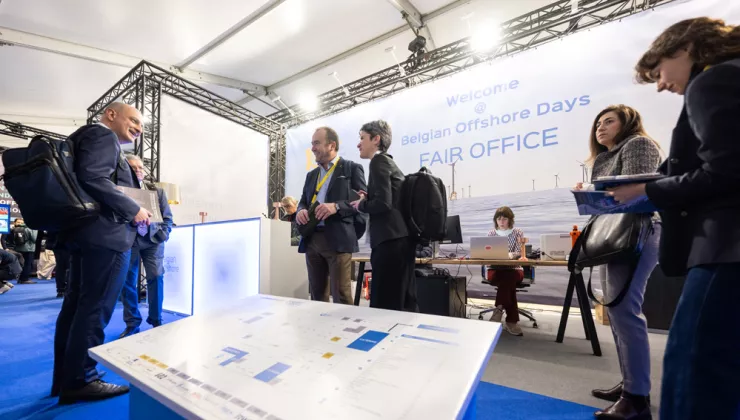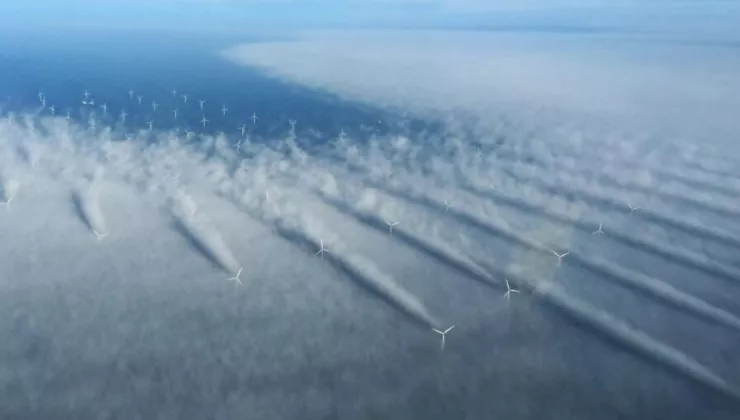DataBeach project completed: a few conclusions
Innovations in the field of machine learning and measurement technologies may make it possible to better assess the financial risks. These innovations can be applied not only to existing sandy coastlines such as beaches and dunes, but also to new dynamic coastal defence systems such as artificial islands and hybrid soft-hard coastal defences.
Within the DataBeach project, IMDC, Fluves, DEME and Vanbreda developed new measuring technology, machine learning models and probabilistic calculation methods for a disruptive progress in the design of soft sea walls. The project was aimed at more sustainable and efficient coastal management, and the development of a quantitative basis for (re)insurance solutions for storm-related sand losses.
Evolution of the coastline visualised
DEME and IMDC installed a CoastSnap station on the sea wall at Oostende-Oost, involving citizens in the visualisation of the evolution of the coastline. A total of 475 photographs of the beach have been collected so far.
Due to the considerable variation in water levels, it was a challenge to determine the coastline evolution. The application of a tide-independent method remains the subject of further investigation.
Groundwater flow disrupts the monitoring of the sand volume
Fluves investigated the possibilities of Distributed Temperature Sensing (DTS) to monitor the sand volume. Due to groundwater flows on the beach, there was no good match between the reference measurements of the beach profile and the basic calculation model (which does not take groundwater flows into account).
Further lab measurements of heat transport in the groundwater flow in marine sand delivered useful insights into the impact of forced convection on buried high-voltage cables.

Erosion predictions can be faster but should be more accurate
IMDC has developed a new coastal morphology model based on machine learning. This new model has resulted in a strong improvement in computing time compared to traditional numerical models. The new model is therefore particularly suitable for probabilistic predictions in view of the large number of calculations.
To assess the performances of the predictions by the machine learning model over a 10-year period, a comparison was made with the measurement data (LiDAR) from the same area. The outcome was that the predicted volumes were well matched in the highest section of the model (5 to 10 metres above mean sea level), while the model overestimated the volume changes in the intertidal zone (0 to 5 metres above mean sea level).
The model was thus partly able to correctly predict the volume changes over a 10-year period. This was the case for both the initial location in Ostend-Bredene and the pilot-case location in Knokke-Zoute.
Hardening of the insurance market makes relaunch difficult
Vanbreda looked into the possibilities of translating probabilistic morphological calculations into a dataset that meets the needs of the insurance sector. At the moment, the model still appears to be insufficiently reliable, mainly for the lower parts of the beach, to be used as input for an insurance product.
In addition, the current insurance market shows little interest in the development of new insurance products. Further development of the probabilistic model concerning sedimentation-erosion volumes may boost the confidence of reinsurers and eventually result in an increase in the supply side of the (re)insurance market.
Further information
Want to find out more about the results of the DataBeach project? Contact Dries Debruyne.


